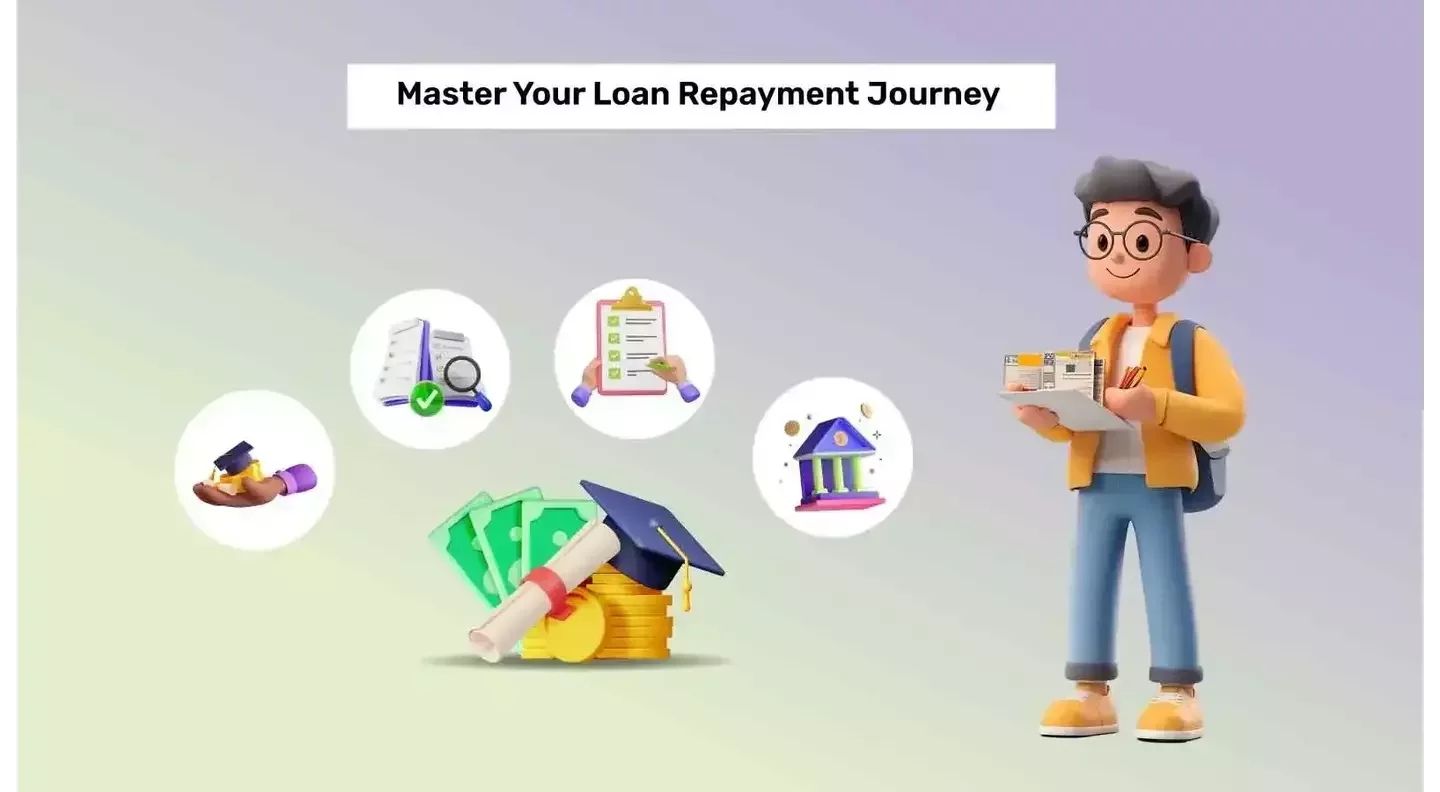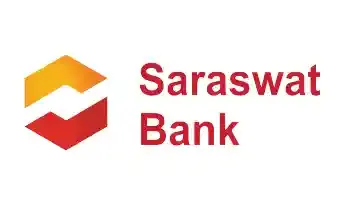Get instant loan offer suitable to your profile !


On this Page:
Learn the best strategies to manage and repay your education loan efficiently after studying abroad. Avoid debt traps and stay financially secure.
Planning how to pay back an education loan is a crucial step in managing your future financial health and ensuring a stress-free journey toward repaying your loan. Whether you have taken an education loan to study abroad or pursuing higher education in India, understanding how education loan repayment works holds great importance. This blog will answer your query about can we pay education loan after getting job. Keep reading to discover the education loan repayment procedure and education loan repayment rules in India options from different lenders.

Often students wonder when and how to repay the education loan. Nonetheless, they know that education loan borrowers are entitled to a moratorium period. Ideally, during this period, the borrower does not have to make any loan repayment. This is the time between the end of the course and the start of a job. RBI has asked banks to give a moratorium period of one year after the completion of the course. Thinking about how does education loan repayment work in India? Well, education loan repayment starts after the moratorium period is over.
| Lender | Moratorium period | Payment during study period |
|---|---|---|
|
Duration of course + 6 months |
Nil |
|
|
Duration of course + 6 months |
Simple interest |
|
|
Duration of course + 12 months |
Simple/partial interest / immediate EMI |
|
|
Duration of course + 12 months |
Simple interest |
After the completion of the moratorium period, applicants are required to plan how to start repaying student loans and pay their EMI. This is how education loan repayment works in India. It is essential to stay on top of your loan repayment game to avoid any negative impact on your credit score/CIBIL score or future loan applications.

Applicants can repay their education loans through various methods, with banks supporting multiple payment options.





Students who wonder can I pay education loan after getting job must learn about how education loan repayment works. Education loan repayment generally begins after a moratorium period, which includes the duration of the course plus an additional grace period of 6-12 months. This grace period allows graduates to secure a job and start earning before they begin making repayments.

The need to repay or not while studying depends on the payment option available to you. Once students know the number of EMIs they have to pay to repay their education loan, the next question that crosses a student's mind is whether he/she has to start repaying the loan while studying. Students need to know the education loan repayment period, how do I repay my student loan and the different repayment options to plan their loan repayment intelligently.
Lenders in India have different policies for repayment during the moratorium period and education loan repayment tenure. They are as follows:




To understand how is education loan repaid and the difference between the 4 repayment plans, let us take the following example -
|
Mr. A is going to Arizona State University For an MS in CS, borrows INR 25 lakh from a lender |
|||
|
Case A |
Case B |
Case C |
Case D |
|
No interest during the moratorium |
Full interest during the moratorium |
PI during moratorium (INR 10K pm) |
Full EMI during the moratorium |
|
Available with secured loans of PSUs |
Available with Axis Bank |
Available with NBFCs |
Available with all the Lenders |
|
Interest rate 10% loan tenure 10 years |
Interest rate 11% loan tenure 10 years |
Interest rate 12% loan tenure 10 years |
Interest rate 13% loan tenure 10 years |
| Features | No Interest During Moratorium | Full Interest During Moratorium | PI During Moratorium (INR 10K pm) | Full EMI During Moratorium |
|---|---|---|---|---|
| - |
Case A |
Case B |
Case C |
Case D |
|
Amount while you study |
- |
INR 22,916 |
INR 10,000 |
INR 35,868 |
|
EMI (Whenever it starts) |
INR 36,341 |
INR 34,438 |
INR 38,450 |
INR 35,868 |
|
Total amount repayment in 10 Years |
INR 43,60,974 |
INR 41,32, 502 |
INR 47,34,030 |
INR 43,04,132 |
|
Effective amount after-tax benefits |
INR 38,02,681 |
INR 36,42,751 |
INR 47,34,030 |
INR 43,04,132 |
The table clearly shows that your repayment option varies with lenders. The student need not start repaying in the moratorium period in the case of education loans from public banks.

Earning a job to repay the loan within the moratorium period is always at the top of a student’s mind. To ensure a well-paid job, the student must start researching jobs at the beginning of the final year. It is better to research in advance and study a course that ensures well-paying job opportunities to reduce loan repayment anxieties.
GyanDhan’s estimated future earning tool would help the students by comparing their earnings against EMI. Based on their course, college ranking, loan amount, and approximate expected annual salary, this tool will help them know their approximate savings and, consequently, the ease with which they can repay their education loan.
To explain further, let’s look at three different cases for Mr. A in the above discussion.
Situation 1: Mr. A is working in the US and earning USD 80,000 per year. His typical disposable income is around 35%, and he is expected to save about USD 2,300 per month. It means that he can save INR 1,97,250 a year.
Based on the above numbers, he can easily pay EMIs. He can even pre-pay to save interest.
Situation 2: Mr. A is going for a Ph.D. and will earn USD 25,000 to USD 30,000 per year.
His EMI will start after 6 months. To repay the loan, he will have to cut expenses and serve the EMI from the stipend. Mr. A didn’t get a job in the US and is working in India now. He will earn INR 1 to 1.5 lakhs per month.
In this case, life will be a bit hard, as one-third to half of his earnings will go into EMI for the education loan.
Estimating the future earnings against the repayment amount is a wise move to avoid big disappointments. For a well-structured calculation, check your earnings with GyanDhan’s estimated earning tool.

The chances of an education loan becoming a Non-Performing Asset (NPA) are real. In simple words, an NPA is a loan on which the borrower has failed to make principal and interest payments during their education loan repayment period. Defaulting on an education loan can have several consequences, including the following:



A wise education loan repayment plan begins soon after disbursal, all it requires is a combination of planning and diligence.

Now that you have understood how to pay education loan, it is crucial for you to also understand smart tips on repaying an education loan. Below are seven effective tips that will help you understand how to pay back education loan and repay your loan early with maximum savings.








An early education loan repayment plan can benefit students in their loan repayment journey. By increasing the amount they pay back to the lender, students can significantly reduce their financial liability. We at GyanDhan, encourage students to be mindful of their expenses while studying and to utilize any potential earnings they can generate during their studies.
There are several ways in which students can lower their education loan repayment burden while studying:




Refinancing your education loan can significantly ease your financial burden compared to extending the repayment term. This approach allows students to negotiate for lower interest rates once they secure employment, potentially reducing a 13% interest rate on an unsecured loan to 11.5%. Such a reduction not only decreases the monthly installment amounts but also lessens the total interest paid over the life of the loan.
Effective planning for your abroad education loan repayment is crucial. A key component of this planning involves understanding how to repay student loan, which includes familiarizing yourself with the start of repayments, interest accrual, and payment structuring. You can develop a solid repayment plan by crafting a budget, exploring various repayment options, prioritizing your payments, and obtaining professional advice. This disciplined approach on how to repay education loan and financial management is vital for maintaining long-term economic stability and achieving goals beyond merely repaying your student loan.
Moreover, when it comes to education loan assistance, GyanDhan is your trusted partner who can provide invaluable support. We offer expert guidance on how to pay education loan and how to pay back education loan, ensuring that you understand all your options for repayment. With our expert education loan counselors and a commitment to securing the best education loans for students. We offer a personalized and comprehensive approach to education loan guidance. Our experts can help you compare loan products, find the most competitive interest rates, and navigate the loan application and repayment process. So take the first step towards your abroad education dreams and check your loan eligibility for free.

Paying interest for education loans while studying varies from lender to lender. Public banks do allow zero repayments during the moratorium period. However, private banks and NBFCs require the borrower to repay simple or partial interest while studying.
Research and compare different lenders and check their eligibility criteria. Once you shortlist the lender, gather the required documents, and submit the loan application online or at the nearest branch. The lender will verify your application and once approved, the funds will be disbursed directly to the institution.
The partial interest rate in education loans refers to a repayment option where borrowers have the choice to pay only a portion of the simple interest of the loan while still studying.
The repayment of education loans starts after the moratorium period. However, some lenders require borrowers to repay during the study period as well.
Yes, students can start repayment of education loans after getting a job.
Yes, students can repay their loans early. There are no pre-payment charges after 6 months of disbursal of education loans.
The timeline of repaying education loans differs from borrower to borrower. Generally, students tend to repay their loans within 5-10 years.
Repaying an education loan involves paying back the borrowed amount with interest through EMIs. Borrowers can choose between various repayment options such as standard EMI, step-up EMI, or interest-only during the course period.
In India, repayment usually begins after the completion of the course plus a grace period (moratorium period). The duration and amount of EMIs depend on the loan amount, interest rate, and repayment tenure. Borrowers can make prepayments without penalties in most cases.
Repayment starts after the end of the moratorium period, which includes the course duration plus an additional 6-12 months. Monthly EMIs are then paid as per the agreed schedule with the lender.
Repayment works through EMIs calculated based on the principal loan amount, interest rate, and chosen tenure. Borrowers can opt for different repayment plans, and payments are made via bank transfers, online payment systems, or post-dated cheques.
The repayment tenure for education loans in India generally ranges from 5 to 15 years, depending on the loan amount and the borrower's repayment capacity. Some lenders offer flexible tenure options to suit individual needs.
Repayment starts after the moratorium period, which is generally the duration of the course plus an additional grace period of 6-12 months. This period allows the borrower to find employment before beginning to repay the loan.
Education loans in India are not interest-free. However, it is possible to minimize or negate the interest through scholarships and subsidies. By availing of 0% interest scholarships or government subsidy schemes, you can effectively reduce the burden of interest on your education loan.
Education loans are generally repaid through monthly installments (EMIs) after a moratorium period, which usually includes the course duration plus an additional grace period of 6-12 months. Repayments can be made through online banking, automatic deductions from your bank account, or post-dated checks. The repayment period usually ranges from 5 to 15 years, depending on the loan agreement.
Check Your Education Loan Eligibility

Ask from a community of 10K+ peers, alumni and experts
Trending Blogs
Similar Blogs

Network with a community of curious students, just like you
Join our community to make connections, find answers and future roommates.. Join our CommunityCountry-Wise Loans
Best Lenders for Education Loan

ICICI Bank

Axis Bank

Union Bank

Prodigy

Auxilo

Credila

IDFC

InCred

MPower

Avanse

SBI

BOB

Poonawalla

Saraswat